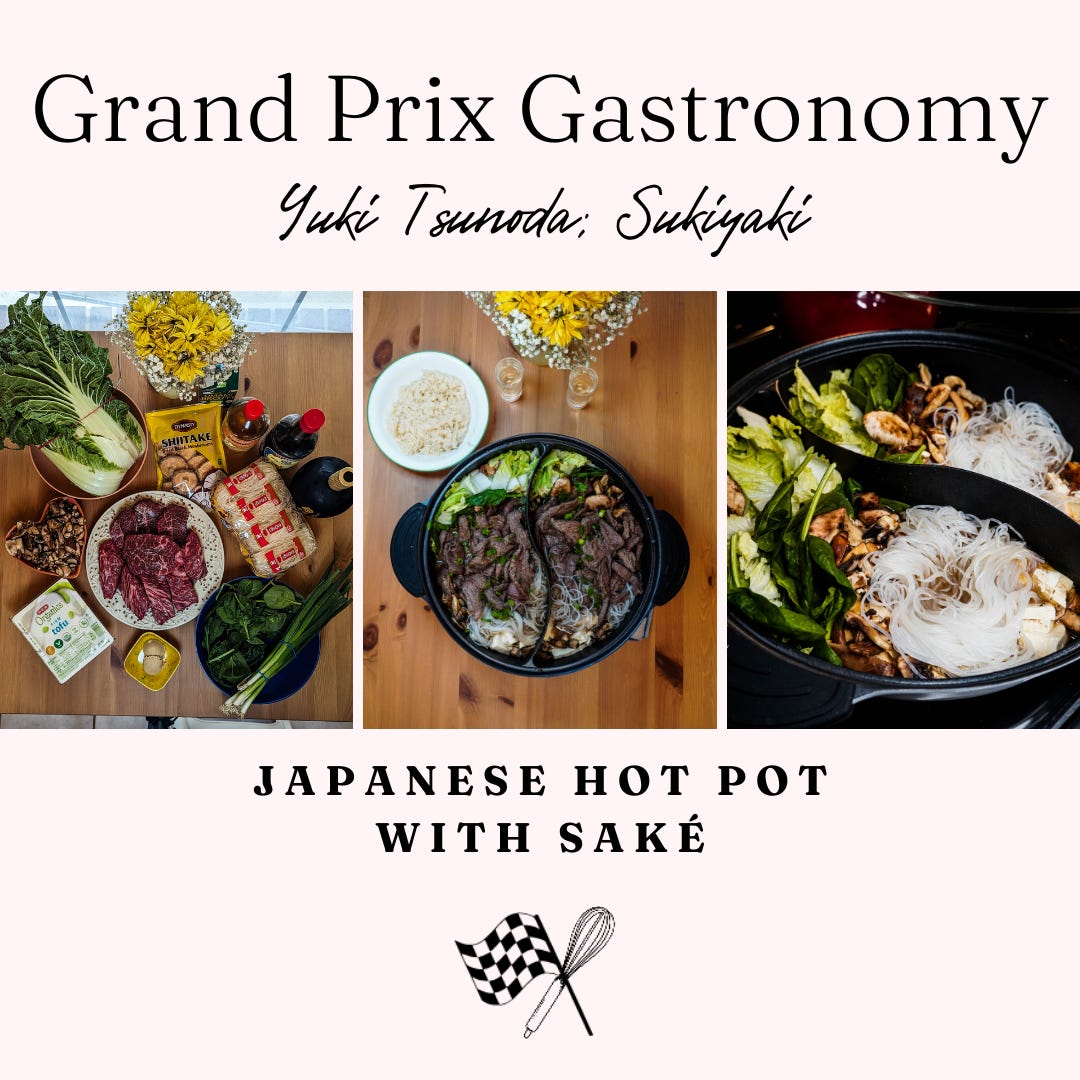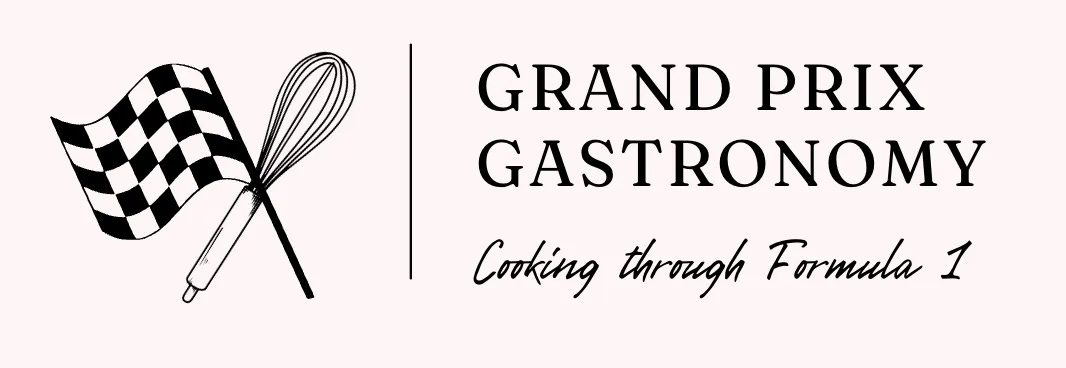Yuki Tsunoda's Sukiyaki Is The Japanese GP's Perfect Pair
I knew Yuki's favorite meal would never disappoint
Welcome to Grand Prix Gastronomy! In 2024, this series is dedicated to cooking the favorite dishes of every driver on the grid.
The Foods That Yuki Tsunoda Loves
More than anyone else, Yuki Tsunoda is the food lover on the Formula 1 grid. Because he admitted to a love of tasty treats in Drive to Survive, tons of interviewers have latched onto the favorite food question With Yuki. As a result, we've got tons of options to choose from!
And there are tons available in this Red Bull interview. He's picked out his favorites from Switzerland, Italy, and the United Kingdom — but I was most interested in the choices he listed for his home country, Japan. He mentions his love of seafood ramen and good sushi. However, he also lists sukiyaki as the first Japanese dish he loves that comes to mind. I’m tempted to believe it lives at the forefront of his brain for a reason — so let's make sukiyaki.

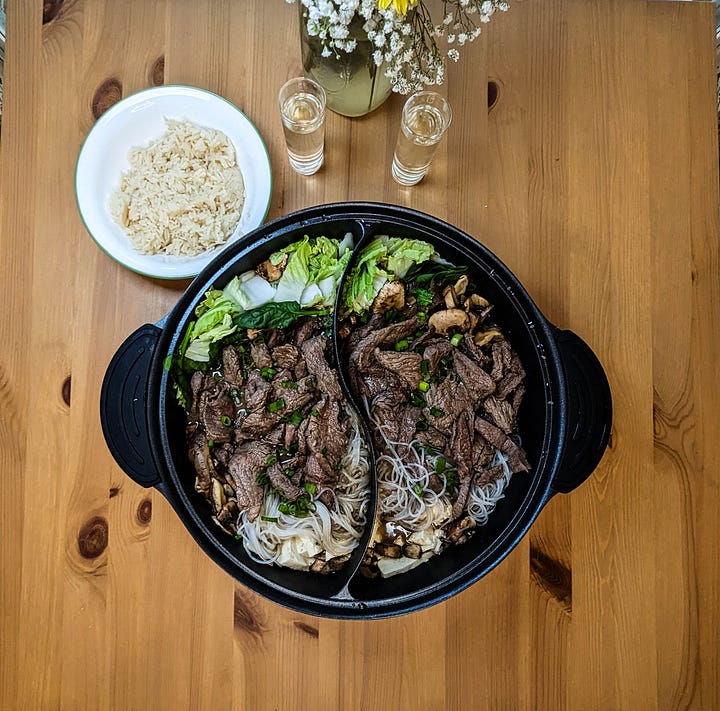
This Week's Recipes
For as much as a I adore Japanese food, I know that I've probably only sampled a very small niche of its cuisine. I've had ramen and sushi. I've had Japanese curry, tonkatsu, and tempura. Go off the well-trod Americanized path, though, and I realize just how much I haven't tried: natto, nikujaga, zenzai, gyutan, chankonabe — all the stuff you don't really see on a menu here in south-central Texas.
One of my favorite places to go for authentic Asian dishes is The Woks of Life; while the family behind the food blog is Chinese, they also share delicious recipes for dishes that hail from other Asian countries — including sukiyaki!
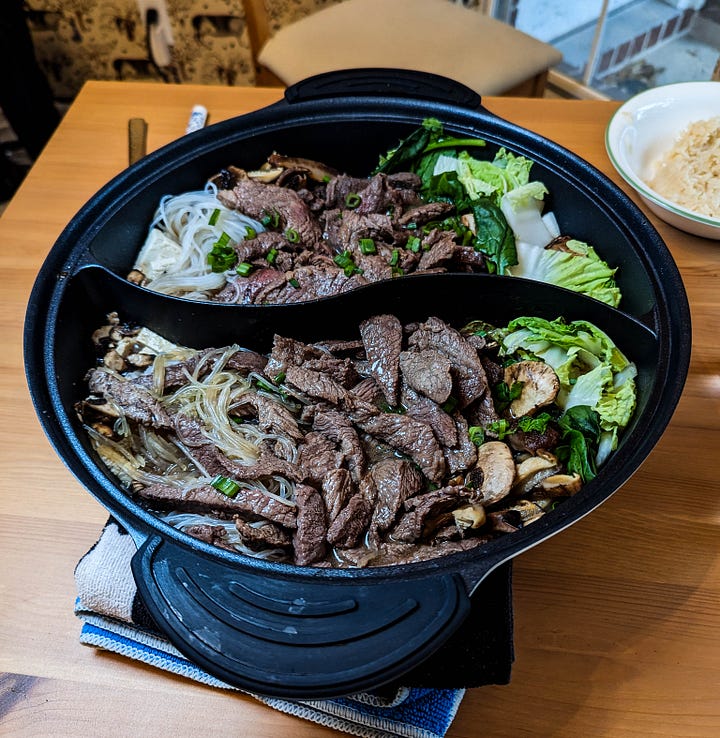

Basically, sukiyaki is a style of Japanese hot pot. There are a few key elements here that differentiate sukiyaki from other forms of hot pot: its broth, its vegetables, and the way you prepare and eat the food. We'll talk about that more in depth in the next section!
Core Recipe:
Cooking Sukiyaki
Sukiyaki is actually pretty simple to make! Your keys to success, though, will lie in your ability to source the right ingredients and prepare them well.
We're preparing this sukiyaki with beef; it's really important that you grab yourself some thinly sliced fatty beef, since your whole dish hinges around this. If you have access to an Asian grocer, you'll likely be able to find the meat already sliced and packaged. I live south of San Antonio, so it's a little tough to find those kinds of regional grocers; instead, I opted to buy some wagyu beef and thinly slice it at home.
I also made a few other substitutions thanks to the kinds of ingredients available at my local grocery stores. If you can grab enoki mushrooms, that'll be most authentic; I couldn't find any, so I opted for sliced shiitake mushrooms. You want tong ho, a leafy green veggie from the chrysanthemum family. My store didn't have that, so I opted for spinach instead. You'd traditionally consume this dish by dipping your simmered beef into egg yolk before eating; I frankly do not trust American conglomerates to provide me with a safe raw egg experience, so I skipped this part. Finally, since this is hot pot, you'd traditionally prepare and consume this all at your table, with your pan sat on a portable burner. I do have one, but I found it easier to cook on the stove for filming purposes.
I know this sounds like a lot of significant changes; that is absolutely the case. I try not to go this hog wild when it comes to making ingredient swaps, but this was a case where I simply could not find the things I needed. I'm showing y’all a slightly more accessible version of this dish based on what you'd probably be able to find in your standard grocery store, too.
Whew, okay! With all that out of the way, let's dig into the preparation!
You'll start by making your sukiyaki sauce; this is a mixture of sake, soy sauce, brown sugar, and mirin. Combine your ingredients in a small saucepan on the stove and let it come to a boil; you just want to cook it until the sugar is dissolved, then remove it from the heat and set it aside.
Then you'll prep your ingredients. Slice a half block of tofu, rehydrate shiitake mushrooms, trim and rinse enoki mushrooms, chop napa cabbage, wash tong ho, separate the white parts of your scallion from the green and then thinly slice the green parts, and soak your vermicelli noodles. If you're slicing your own beef at home, you'll also do that now; the best way to do this is by freezing the meat for an hour or two before you intend to cut it. Using a very sharp knife, slice against the grain of the meat. Each step here is important; the freezing prevents the meat from squishing too much as you slice it, and the sharp knife means you don't have to saw at the meat. That said, you don't want the meat frozen solid.
Alright, now we can start assembling everything! Cook the whites of your scallions in some hot oil, then add in your beef and some sukiyaki sauce, and cook until it's just starting to sear; you still want the meat to be a little pink. I cooked my meat in batches, just for ease. Remove the beef and set aside.
In that same pan, you'll add in the rest of your sukiyaki sauce and some dashi stock. Bring that to a boil; then, you'll add in your veggies and drained noodles in sections. Cover the pot and let everything simmer for about five minutes, then add your beef back in and sprinkle with the chopped scallion greens.

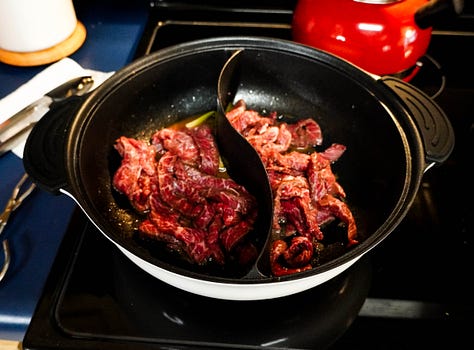
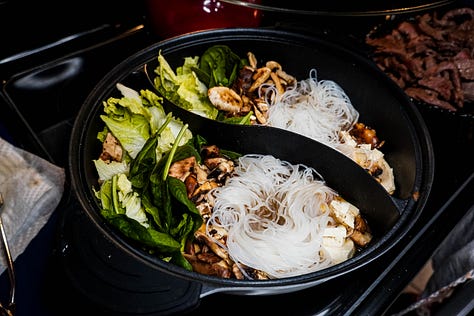
You can eat your sukiyaki as is, or you can eat it with some steamed rice and with the aforementioned egg yolk; if you go the yolk route, make sure your eggs are pasteurized. Please do not risk a food-borne illness for Grand Prix Gastronomy.
The Wine List
Ah, Japan! What could I select for my sukiyaki drink, if not sake? You'll already need sake to make the sukiyaki sauce, so grab a bottle that sounds like it'll be up your alley and sip some alongside your meal.
Sake is Japanese rice wine, and every bottle you drink will likely be different; much like with wine, the ingredients, location, and process all combine to create a drink that's unique to its grower.
There's a good chance that if you know anything about sake, you know that it can be consumed warm. You can also serve your sake chilled. The bottle you purchase will likely include instructions on how to serve the drink, but if you're buying from a wine store that includes tasting notes for its drinks, you can usually figure out the best way to serve it based on the taste. Fruity, floral wines with high acidity are best served chilled. If your sake says it's got a richer or more umami flavor profile, opt to heat it. If it's an expensive or premium sake, you probably want to chill it. If it's cheaper, you can feel okay about heating it.
Basically, you just don't want to overheat your sake. When we say “warm,” we mean like 105 degrees Fahrenheit maximum. If it gets too hot, the flavor profile will get wonky.
If you're unclear about temperature, use this as your opportunity to learn! Chill one small glass of sake, warm another, and leave a third at room temperature. Try your room temp sake first and ask yourself if you think you'd prefer it warmer or cooler. Then try the warmed and cooled sakes. If you find you have a preference, then serve it in whatever way makes you happiest!
So, What's The Verdict?
Wow. Wow wow wow wow wow wow wow. I frickin’ love sukiyaki.
I only had one nitpick about my sukiyaki adventure, and it's that I wished I'd seen it consumed or consumed it at a restaurant first. I've never gone out for hot pot because I don't feel like I know how. I would have never gone out for Korean barbecue had I not gone with a friend who showed me the ropes. Because the act of preparing and consuming this dish is just as important as the ingredients, it's definitely something I'd have liked to have more experience with before eating it at home.
That being said: I was obsessed. Fully, wholly obsessed. Even my husband, who was skeptical about the dish's various ingredients, begged to have our leftover sukiyaki for both lunch and dinner the day after we first prepared it. The broth is delicious and reminiscent of ramen, though I'd say the sukiyaki broth is a little less complex. The sheer amount of veggies, which are more steamed than anything else, also helps it feel lighter. This is one of those dishes that I cannot wait to make again when I'm not feeling my best; it's like medicine for the soul.
The beef is absolutely the star of the show, which is why I recommend opting for something of a really good quality. Since the only thing you season the beef with is a bit of the sukiyaki sauce, you need something that's got a lot of flavor to begin with. Treat yourself! It's what Yuki Tsunoda would want.
Ready… Set… COOK!
If you’re interested in seeing the progression of Grand Prix Gastronomy, you’ll be able to do so in a few places. Instagram will feature most of the visual content, while Substack will be a little wordier. If you need a handy mid-week roundup, you’ll be able to find those on Twitter.
Here are all the relevant links in one place, if you want to subscribe:
All Grand Prix Gastronomy-related content will be free — but if you want to drop me a donation on PayPal, that’s always welcome.
Plus, if you're looking to delve deeper into motorsport history, don't forget to check out my new podcast, Deadly Passions, Terrible Joys! I have a Patreon; sign up, and you'll receive extra content!




